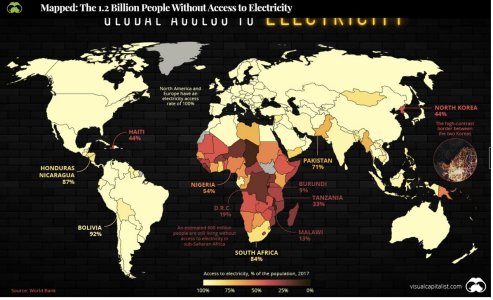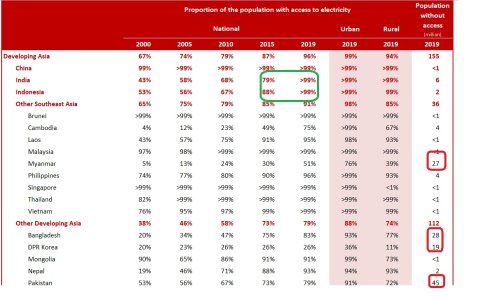Buffet
Post of the Week winner
- Joined
- Aug 1, 2011
- Runs
- 27,425
- Post of the Week
- 3
Often we all take access to electricity for granted, but more than 15% of the world's population does not have access to electricity.
This is not about getting electricity for 1 hour vs 24 hours. This is simply not having access at all.
.

It may not seems significant to some, but it's a huge change in the last 100 years when it comes to humanity getting access to electricity. Not having access at all puts anyone at a huge disadvantage.
This is 3 years old world map and I am sure we must have made some progress, but over a billion have no access even now.
This is not about getting electricity for 1 hour vs 24 hours. This is simply not having access at all.
.

It may not seems significant to some, but it's a huge change in the last 100 years when it comes to humanity getting access to electricity. Not having access at all puts anyone at a huge disadvantage.
This is 3 years old world map and I am sure we must have made some progress, but over a billion have no access even now.







